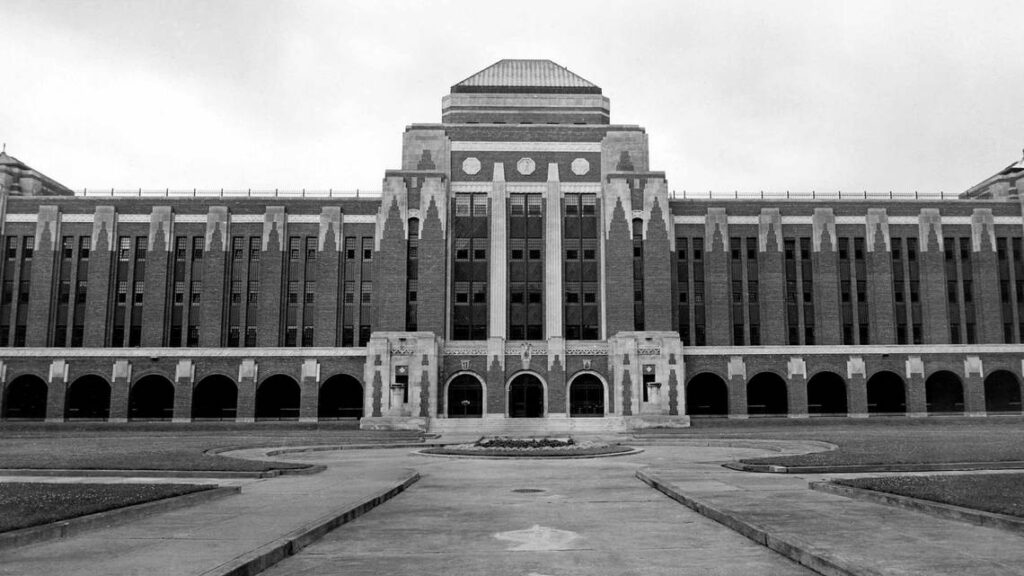Narco Farm

Good local journalism should be encouraged, and as consequence I’m happy to recommend Taylor Six’s three part series in the Lexington Herald-Leader on the Narco Farm, an early drug addiction rehabilitation facility in Lexington. It may not surprise you to learn that certain jazz musicians and fellow travelers resided at the Narco Farm from time to time, including Chet Baker, Howard McGhee, Benny Green, Red Rodney, Sonny Rollins, Tadd Dameron, Jackie McLean, Wayne Kramer, and of course William S. Burroughs. I do appreciate that all of the links below are paywalled, so if you want to know more you might just have to invest in a brief trial subscription…
Of the impact on Lexington’s local arts scene:
Artist Bob Morgan grew up in Lexington when the facility, which is now the Federal Medical Center, was running as Narco. He watched how the people who inhabited it changed the city’s landscape. “Part of one of the unusual things about the culture of Lexington that is never talked about is that layer of what culture was laid in Lexington by Narco,” Morgan told the Herald-Leader. “…A lot of people stayed here in Lexington and it never left the community and then a lot of people left their mark here in the community. Morgan referred to Lexington as a “cow town” in that era, aside from the horse business. “There was a beat generation in Lexington that shouldn’t have been here, because the beat scene did not happen in the south, in the midwest,” Morgan said. “How did that beat scene happen in Lexington? …I firmly believe that Narco contributed to that because all of the beats came here all the jazz musicians have not came here to go to Narco. All the people of the underground arts and culture scene on the east coast and in from all the major cities, did time here at Narco.”
Of the impact on long-term addiction research:
In 1935, researchers and medical professionals recognized substance use disorder as a chronic relapsing disease, not a moral failing. In fact, one of the research facility’s first discoveries was that people using drugs were not “degenerates’‘ or “criminals,” despite societal stigma. A 1939 full page article by the Denver Post about Narco highlighted how the perception of addiction was changing in the U.S. “A few scant years ago, dope addicts were treated as criminals, and thrown into penitentiaries, jails and county lockups along with burglars, felons and murderers,” the article read. “Today, this inhumane treatment is slated for discard, for Uncle Sam has come to the decision that drug addicts are not criminals – they are sick people, both mentally and physically – and if given proper understanding and treatment, stand a fair chance of getting on their feet and returning to the world to live normal lives.”
On preserving historical memory of the facility:
Louis arrived in Lexington in August 1964, and worked as the nursing supervisor in the facility’s psychiatric unit at Kolb Hall. The facility was renamed the U.S. Public Health Service Hospital, and then the National Institute of Mental Health Research Center where Louis was the associate chief of education and training. Before his time in Lexington, he was commissioned to work at the sister facility in Fort Worth, Texas, where he spent four years. Later during his tenure in Lexington, Louis position was made an educator, where he was tasked with giving lectures and tours to the public about the facility, as well as what addiction is. Louis is steadfast in his assertion that the two facilities have never gotten the full recognition they deserve regarding their historical significance for strides in addiction and drug studies. He has submitted hundreds of documents and multiple artifacts to the Kentucky Historical Society in Frankfort, which continues to preserve his collection. It includes drug paraphernalia, patient artwork, photos, slides, videos, facility keys and annual reports.
Documentary on the facility:
I would also heartily encourage anyone who’s interested in the history of gay life in the American South to find and watch Last Gospel of the Pagan Babies, a documentary that essentially chronicles a century of gay history in the city and region and that includes discussion of the Narco Farm It features, among others, Henry Faulkner, Tennessee Williams, Rock Hudson, and Lee Majors, and parts of it will blow your mind.


